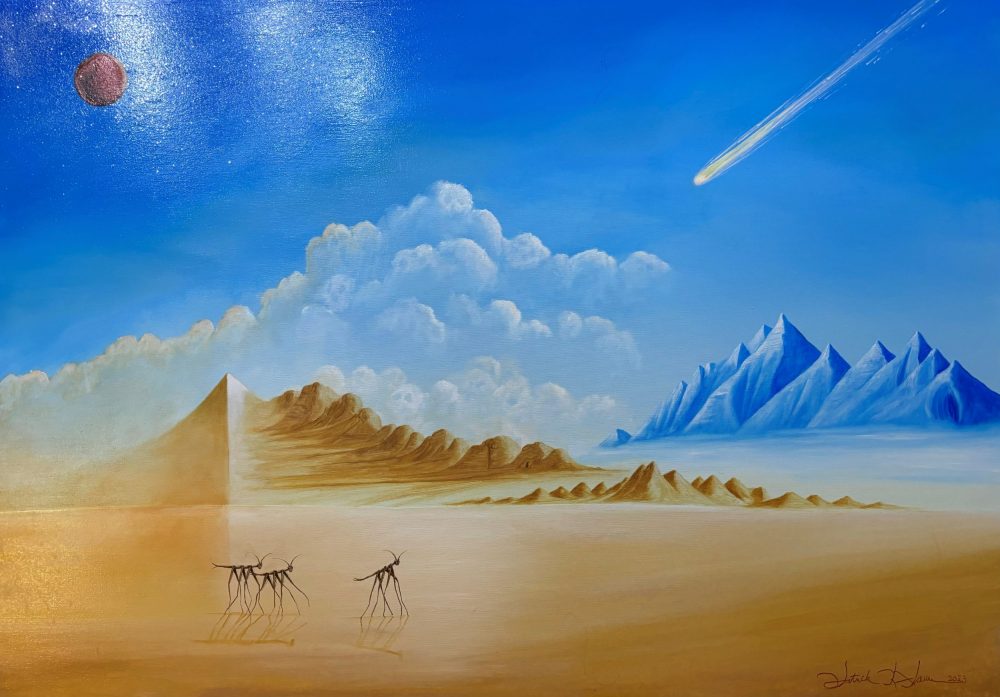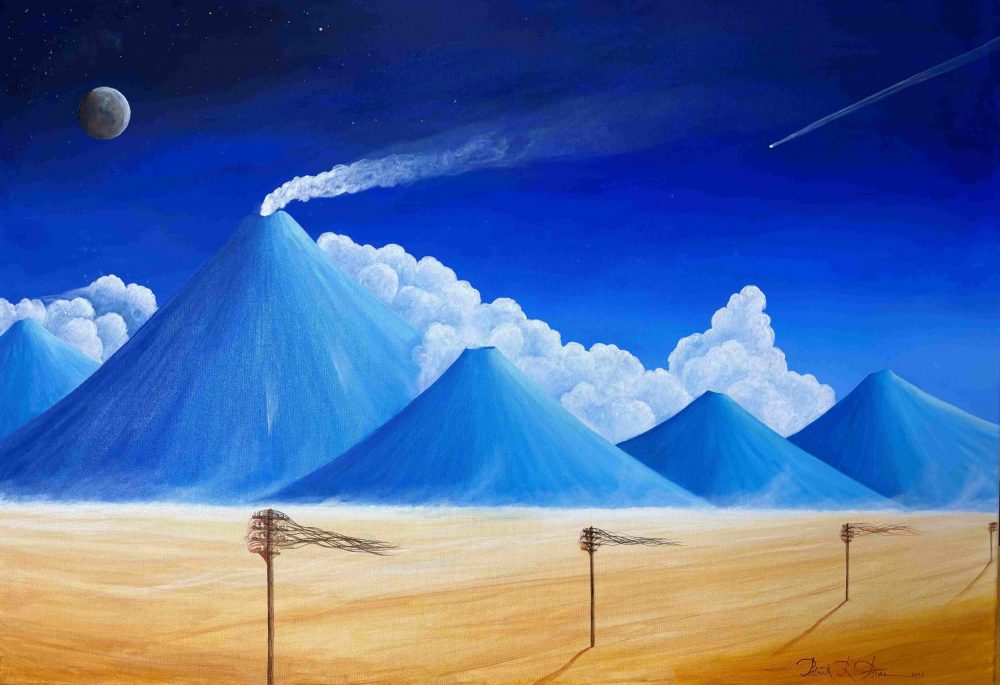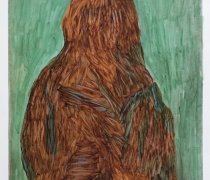- Jobs
- Open Calls
- Events
- Learning
- More
- SUBMIT
Patrick R Faure
Country where you live:
- United Kingdom
City where you live:
- london
Website:
Instagram:
Statement :
Contemporary Surrealism, my chosen artistic style, serves as a contemplative exploration of humanity’s place in the cosmos. Centred on the fragility of our existence, it confronts the absurdity of the human condition within an isolated and seemingly insignificant universe. My art grapples with existentialist questions, echoing the uncertainties that have haunted humankind throughout history. From the mysteries preceding the universe to our origins and destinies, my work acknowledges the limitations of our comprehension. I use familiar multichromatic elements arranged to puzzle the viewer, symbolizing our collective inability to fully grasp the complexities of our existence. I dismantle fabricated explanations, questioning the validity of woke, religion, gods, extraterrestrials, and ancient myths of superior knowledge. Through this lens, I invite contemplation on our vulnerability to cosmic forces and our inexplicable enthusiasm for self-destruction. I stand as an artistic testament to the enduring enigma of our journey and the beauty found in embracing our lack of knowledge, which drives our curiosity and our search for answers.

Elegy for a Vanishing World
In the ethereal world of the post-human era, where time flows like the melancholy notes of a fading requiem, the disintegration of the once-majestic pyramids marks the silent passing of an epoch. The air, thick with the weight of memories, carries the whispers of a civilization now reduced to mere shadows in the shifting sands.
As the sun dips below the horizon, casting a golden glow on the crumbling pyramids, the weathered stones yield to the relentless forces of wind and erosion. Each grain of sand seems to carry a fragment of human history, an intricate tapestry woven by the ambitions, triumphs, and failures of a bygone era. The ancient structure, once a symbol of human ingenuity and ambition, now stands as spectral remnants, returning to the very earth that birthed it.
At the forefront of this captivating scene, the disintegrating pyramid bears witness to the transience of the human species. The echoes of footsteps that resonated through its history are now replaced by the haunting whispers of the desert wind. The stones that made up the grand structure crumble into dust, eroded by time, mirroring the ephemeral nature of existence.
In the background, the once-majestic mountains, silent sentinels, show the scars of human industry and warfare. Their peaks, shrouded in an ominous blue hue, tell a tale of environmental exploitation, nuclear conflict, and the heavy cobalt pollution that poisoned the lifeblood of the planet. These mountains, once revered for their majesty, now remain as mute witnesses to the ascent and descent of civilizations, testifying to humanity's insatiable hunger for progress at the cost of its habitat.
Amidst a sea of clouds, a tapestry of sorrowful faces emerges, ephemeral apparitions etched in the firmament. These ghostly visages are the ultimate witness to the collective folly of humanity, capturing the sorrows, joys, and moments of agony over the loss of a world now abandoned. The clouds, that used to bring water and life to the land, now carry the weight of the fleeting nature of human existence, casting a poignant veil over the desolate world below.
As the final harbinger of its cosmic destiny, a comet hurtles towards Earth with an unrelenting trajectory. Its fiery tail illuminates the azure expanse, symbolizing the indifference of celestial forces to the rise and fall of civilisations. The impending collision serves as a cosmic reminder of the cyclical nature of the universe, where celestial events persist long after the last heartbeat of humanity has faded into oblivion.
In this profound depiction of a world after our disappearance, the artist's brush captures not only the disintegration of human influence on Earth but also the resilience of the planet itself. The crumbling pyramids, the blue-tinged mountains, the sorrowful faces in the clouds, and the impending comet collectively weave a story of impermanence. As viewers confront the sobering reality of humanity's impact, the painting demonstrates that, in the grand tapestry of the cosmos, our existence is but a fleeting stroke on the canvas of time.
Work Credit:
Patrick R Faure

Spectral Threads of Time
In the remote reaches of a forgotten land, a large stratovolcano reigns over a desolate landscape. A brooding giant it lazily spews clouds of sulphur dioxide into a cobalt blue sky. The air hangs heavy with the acrid scent of impending unrest. Powerful carbon dioxide clouds form behind the volcanic range, ominous in their presence, yet devoid of any relief to the parched sandy ground below.
In the darkness of the sky, the moon shines timidly over the manganese blue mountains that stand as silent witnesses to a time long past. In the foreground, telephone posts stick out like lonely sentinels, their cables battered by the relentless wind, and forming the hair of phantasmagoric figures. These disconnected posts serve as haunting reminders that once, in a distant era, humans had inhabited this forsaken planet.
Among the twisted cables and silent posts, the faces of women, almost forgotten, are barely distinguishable. These spectral visages are all that remains of the dreams of a people who had once communicated, loved, and hoped beneath the watchful gaze of a benevolent sun. Now, the faces seem to gaze out into the barren wasteland with eyes that reflect both the memories of a bygone era and the desolation of the present.
As the volcano rumbles in the distance, the telephone posts, stand as stoic witnesses to the passage of ages, continuing to bear the weight of memories, their cables twisted by the agony of the passage of time and longing for connection. The wind howls through this lonely scene, carrying with it the echoes of laughter, the murmur of conversations, and the distant hum of technology. In the sky, a comet and its long tail of ice debris zooms by, potentially on a collision course with a world where nothing is left to destroy.
Work Credit:
Patrick R Faure
Bio:
Patrick Faure, a contemporary surrealist painter from the Principality of Monaco, stands at the intersection of intellect and imagination. Holder of advanced degrees in humanities and sciences from Binghamton University and the University of Southern California, Faure embarks the viewer on a journey that seamlessly merges his diverse academic background with a profound passion for art.
Faure's paintings serve as a testament to his ability to weave together art, philosophy, and poetry within the contemporary surrealistic framework. Delving into the realms of dreams, sexual desire, knowledge, and erudition, his works offer a synthesis of mythical phantasms, reflections on the modern human condition, and the nightmares of post-human imagery. Through his art, Patrick Faure challenges societal values, denouncing ignorance and superstition, and portrays a world where cosmic forces inexorably shape our destiny, leading to an ultimate confrontation with extinction.
Faure has been confirmed as a returning artist by the European Cultural Centre (Italy) to represent Monaco at the prestigious 2024 Venice Biennale. He just announced that he was selected as a finalist in the 2024 Artist of Europe Award in Paris. In every stroke and concept, Patrick Faure continues to shape a surrealist odyssey that transcends borders and resonates with the collective consciousness of a global audience.
|
Germany Berlin |
United States Bremen |
Germany Cologne |
United States New York City |
United States Providence |












